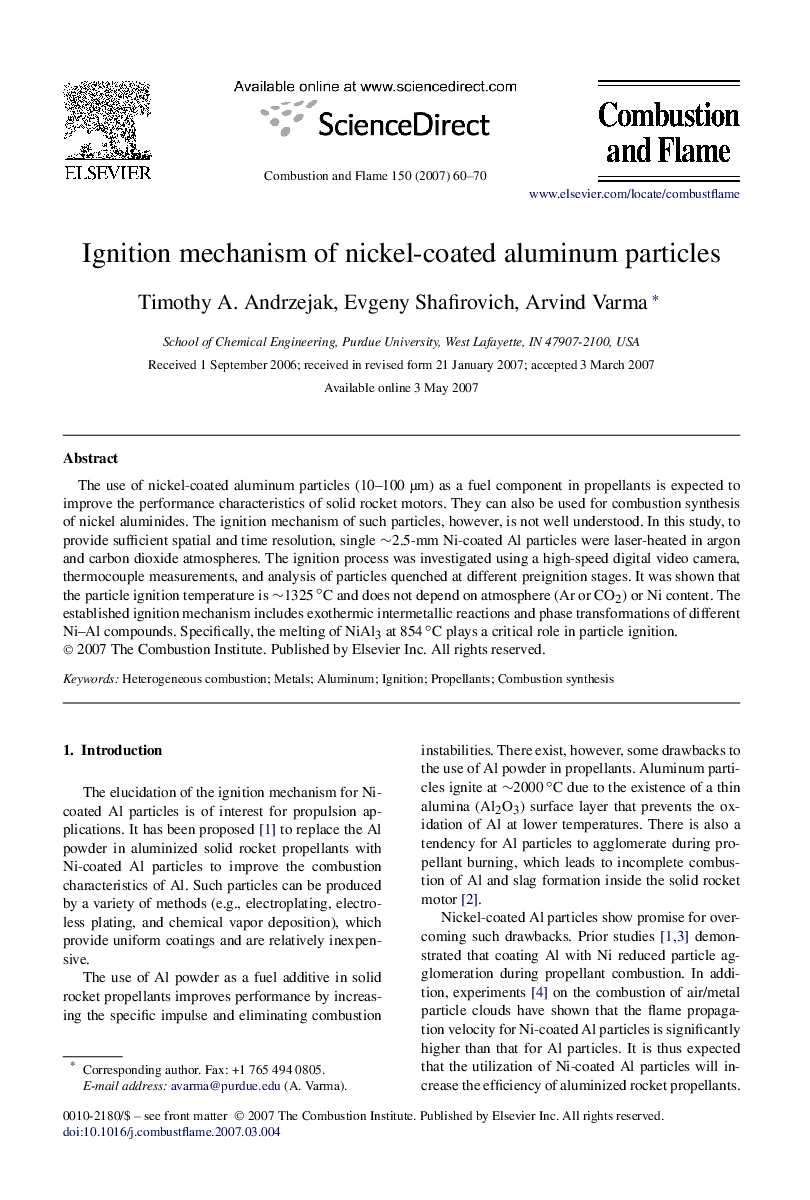| Article ID | Journal | Published Year | Pages | File Type |
|---|---|---|---|---|
| 169697 | Combustion and Flame | 2007 | 11 Pages |
The use of nickel-coated aluminum particles (10–100 μm) as a fuel component in propellants is expected to improve the performance characteristics of solid rocket motors. They can also be used for combustion synthesis of nickel aluminides. The ignition mechanism of such particles, however, is not well understood. In this study, to provide sufficient spatial and time resolution, single ∼2.5-mm Ni-coated Al particles were laser-heated in argon and carbon dioxide atmospheres. The ignition process was investigated using a high-speed digital video camera, thermocouple measurements, and analysis of particles quenched at different preignition stages. It was shown that the particle ignition temperature is ∼1325 °C and does not depend on atmosphere (Ar or CO2) or Ni content. The established ignition mechanism includes exothermic intermetallic reactions and phase transformations of different Ni–Al compounds. Specifically, the melting of NiAl3 at 854 °C plays a critical role in particle ignition.
